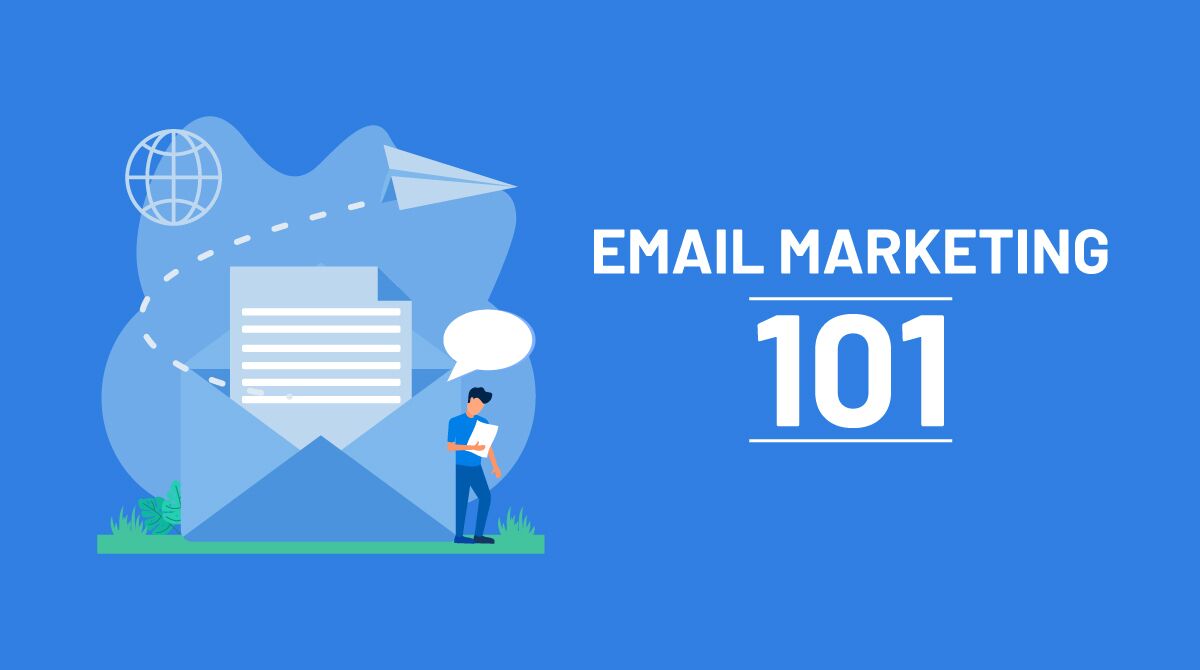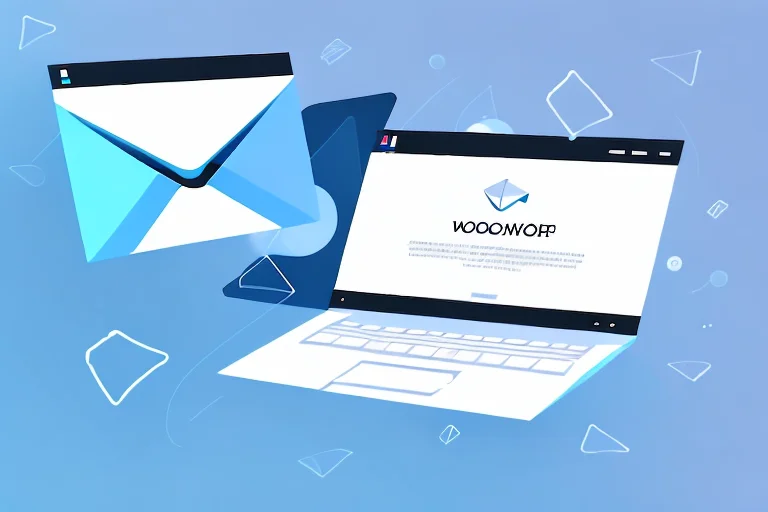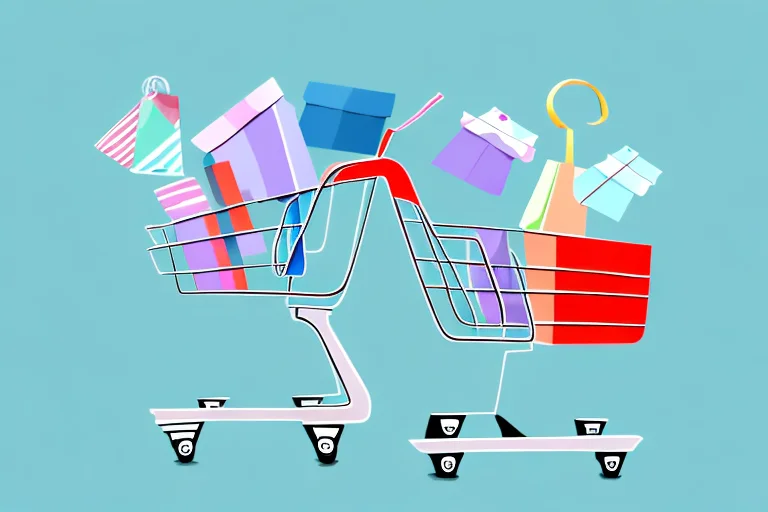Email marketing for B2B medical supplies is a powerful tool that, when executed correctly, can help businesses reach and engage their target audience effectively. In this blog post, we’ll examine the various tactics you can utilize to create effective email campaigns tailored for healthcare businesses.
Firstly, we’ll explore how customizing your messaging for different audience segments can establish your authority in the industry. Next, we’ll discuss how engaging subject lines and content are crucial in capturing prospects’ attention and driving them to take action.
Furthermore, we will look at gated assets as an effective method of lead generation within email marketing for B2B medical supplies. We will also examine setting benchmarks based on industry-specific data and optimizing campaigns according to performance insights. Finally, our discussion will touch upon Account Based Marketing (ABM) as a valuable approach in targeting high-value prospects within the medical supply sector.
By understanding these key components of email marketing campaigns tailored to healthcare providers and organizations, you’ll be well-equipped to grow sales and strengthen relationships with potential customers in this competitive market.
Table of Contents:
- Customized Messaging for Target Audience
- Engaging Subject Lines and Content
- Measuring Results Specific to Medical Supplies Sales Efforts
- Account Based Marketing (ABM) Approach Example
- FAQs in Relation to Email Marketing for B2B Medical Supplies
- What are the best practices for email marketing to B2B medical supply customers?
- How can I measure the success of my email campaigns targeting B2B medical suppliers?
- What types of content should be included in emails sent to B2B medical supply customers?
- How often should emails be sent out to B2B medical supply customers?
- Are there any specific regulations or guidelines that must be followed when sending emails to B2B medical suppliers?
- Conclusion
Customized Messaging for Target Audience
Email marketing is a fantastic way for B2B medical supply companies to tailor their messaging based on each recipient’s needs, fostering stronger relationships and trust. By sending wellness tips, treatment options, and general health advice specific to each recipient’s journey, businesses can establish themselves as authorities in the industry.
Personalizing Email Content for Different Segments of Healthcare Professionals
A single solution won’t suffice when you’re attempting to reach healthcare professionals who are overwhelmed with information daily. Instead, try segmenting your audience into groups like physicians, nurses, or hospital administrators and crafting personalized messages that address their unique pain points. For example, Healthcare IT News suggests using demographic data such as job title or specialty area.
Building Credibility by Providing Relevant Information
- Digital Marketing Pro Tip: Share the latest research findings from reputable sources like the JAMA Network, so your potential customers know they can trust your expertise.
- Social Media Savvy: Don’t forget to cross-promote any valuable blog posts or resources through social media channels like LinkedIn – this will help amplify your reach.
- Email Communications Etiquette: Always include an easy-to-find unsubscribe link in every email campaign – respecting recipients’ preferences goes a long way towards building goodwill (and staying compliant).
Incorporating these strategies into your B2B medical supplies email marketing campaigns will not only strengthen relationships but also position your company as a go-to resource for healthcare professionals.
Customized messaging for target audiences is a key component of successful email marketing campaigns, as it helps to create an engaging and personal experience. By crafting compelling subject lines and content that provides valuable information during each stage of the customer journey, you can maximize engagement with your B2B medical supplies emails.
Engaging Subject Lines and Content
To maximize the effectiveness of email campaigns, marketers must use captivating subject lines that grab recipients’ attention like a well-placed stethoscope. Creating informative emails with well-crafted content throughout various stages of the buyer’s journey is essential for a successful campaign.
Crafting Compelling Subject Lines to Increase Open Rates
- Make it personal: Use the recipient’s name or reference their profession (e.g., “Dr. Smith, revolutionize your clinic with these cutting-edge supplies”)
- Create urgency: Limited-time offers or exclusive deals will make healthcare professionals more likely to open and act on your message (e.g., “Last chance: Save 20% on surgical equipment today.”)
- Arouse curiosity: Intriguing questions or statements can pique interest and encourage opens (e.g., “The secret tool top surgeons are raving about”)
Providing Valuable Information During Awareness, Consideration, and Conversion Phases
In addition to crafting irresistible subject lines, it’s crucial to provide valuable information during each phase of the buyer’s journey. For example:
- Awareness Phase – Educate potential customers about industry trends or new products by sharing insightful articles from reputable sources like this one on how technology is shaping the future of healthcare.
- Consideration Phase – Showcase your medical supplies’ unique features and benefits by comparing them to competitors or sharing customer testimonials.
- Conversion Phase – Seal the deal with exclusive discounts, free trials, or personalized consultations that demonstrate your commitment to helping healthcare providers succeed.
Email marketing campaigns for B2B medical supplies don’t have to be dull. With engaging subject lines and content tailored to each stage of the buyer’s journey, you’ll be well on your way to growing sales and forging lasting relationships in the healthcare industry.
Engaging subject lines and content can be the key to successful email marketing for B2B medical supplies. To further enhance lead generation, gated assets such as whitepapers and case studies should also be incorporated into your campaigns.
To make email marketing campaigns for B2B medical supplies successful, marketers must use engaging subject lines and provide valuable information throughout the buyer’s journey. Compelling subject lines can increase open rates by personalizing messages, creating urgency or arousing curiosity. Valuable content during each phase of the buyer’s journey – awareness, consideration and conversion – is crucial to sealing deals with exclusive discounts or personalized consultations that demonstrate commitment to helping healthcare providers succeed.
Gated Assets for Lead Generation
Let’s face it, we all love freebies. But what if I told you that offering gated assets like whitepapers or case studies could help generate leads through email marketing by requiring users to opt-in for more information? Seems like a beneficial arrangement, doesn’t it?
- Whitepapers addressing common challenges faced in the medical supply industry: By providing valuable insights and solutions to issues healthcare providers often encounter, your business can position itself as an expert resource. Plus, who doesn’t appreciate a helping hand when tackling tricky problems?
- Case studies showcasing success stories from previous clients: Sharing real-life examples of how your products or services have positively impacted other organizations not only demonstrates credibility but also inspires potential customers to envision similar results for their own businesses.
This approach not only builds relationships (because let’s be honest, everyone loves feeling special) but also increases engagement by providing content relevant to prospects’ interests while gaining insights into clients’ preferences. So go ahead and give away those juicy tidbits – just make sure they’re locked behind an opt-in gate.
Gated assets for lead generation are a great way to capture leads and build relationships with potential customers. By measuring results specific to medical supplies sales efforts, we can gain insight into the effectiveness of our campaigns and better optimize future ones.
Measuring Results Specific to Medical Supplies Sales Efforts
When it comes to measuring the success of your B2B healthcare email marketing efforts, you can’t just compare apples and oranges. That is, don’t base your results against traditional SaaS or other industries. Instead, analyze historical data specific within the realm of medical supplies sales endeavors. This ensures an accurate assessment of performance relative to unique challenges faced by those operating in this space, thus allowing optimization for future campaigns accordingly.
Analyzing Historical Data Within the Context of B2B Medical Supplies Sales Efforts
To get a clear picture of how well your email marketing campaigns are performing, dig deep into past data from similar businesses in the healthcare industry. Look at open rates, click-through rates (CTR), and conversion rates among potential customers like healthcare providers and organizations. Comparing metrics to industry standards can help you pinpoint potential areas for improvement.
Optimizing Future Campaigns Based on Past Performance
- Digital Marketing: Use insights gained from analyzing historical data to fine-tune your digital marketing strategies moving forward.
- Email Communications: Adjust subject lines and content based on what resonated most with recipients in previous campaigns.
- Sales Team Collaboration: Share findings with your sales team so they can better align their outreach efforts with successful email tactics used previously.
- Social Media Integration: Incorporate learnings from email analysis into social media strategies for a cohesive online presence that drives growth in sales across all channels.
In short, don’t just measure your email marketing success against generic benchmarks. Instead, take a deep dive into the world of B2B medical supplies sales and use that data to optimize future campaigns for maximum impact.
Measuring results specific to medical supplies sales efforts can help you understand what strategies are working and which need improvement. By utilizing an ABM approach, you can tailor your B2B email marketing efforts to garner the most bang for your buck.
To measure the success of B2B healthcare email marketing efforts, it’s important to analyze historical data specific to medical supplies sales. By comparing metrics with industry benchmarks and fine-tuning digital marketing strategies, subject lines, content and social media integration based on past performance insights can help optimize future campaigns for maximum impact.
Account Based Marketing (ABM) Approach Example
Rather than relying on luck, an ABM approach allows you to target specific high-value prospects within the healthcare industry with a focused strategy. In the world of B2B medical supplies sales, this means focusing your efforts on specific high-value prospects within the healthcare industry. Think of it as a laser-guided missile instead of carpet bombing – much more effective and efficient.
Identifying High-Value Prospects in the Medical Supply Industry
- Create a roster of likely purchasers based on criteria such as enterprise magnitude, proceeds, or site.
- Analyze their pain points and challenges related to medical supplies management.
- Select those with the highest potential ROI for your business.
Tailoring Content to Address Unique Challenges Faced by Target Accounts
To make sure you hit that bullseye every time, customize your email marketing campaigns according to each account’s needs:
- Research: Dig deep into understanding what makes them tick – are they struggling with inventory management? Are they looking for innovative solutions?
- Create relevant content: Develop blog posts, whitepapers or case studies addressing these unique challenges. No two accounts are the same – tailor your approach accordingly.
- Engage intelligently: Use personalized messaging, engaging subject lines, and well-crafted emails tailored specifically towards each target account. This will show them that you’re not just another faceless corporation but rather a trusted partner who understands their needs.
By adopting an ABM approach, B2B medical supply companies can build stronger relationships with their high-value prospects and increase the likelihood of conversions. So go ahead, give it a shot – you might just hit that sweet spot.
FAQs in Relation to Email Marketing for B2B Medical Supplies
What are the best practices for email marketing to B2B medical supply customers?
Email marketing best practices for B2B medical supply customers include segmenting your audience, personalizing content, crafting engaging subject lines, providing valuable information and resources, using gated assets for lead generation, and adhering to industry-specific regulations. Regularly analyze campaign performance and optimize based on insights. For more tips on effective email marketing strategies in this sector, check out these guidelines.
How can I measure the success of my email campaigns targeting B2B medical suppliers?
To measure the success of your email campaigns targeting B2B medical suppliers, track key performance indicators (KPIs) such as open rates, click-through rates (CTR), conversion rates from leads to sales or appointments booked with prospects. Analyze these metrics against industry benchmarks and use data-driven insights to optimize future campaigns.
What types of content should be included in emails sent to B2B medical supply customers?
In emails sent to B2B medical supply customers, include content that showcases your expertise and provides value like product updates or announcements; educational materials such as whitepapers or case studies; invitations to webinars or events; promotional offers; customer testimonials; relevant news articles related to their niche within the healthcare field. Find inspiration from these top-performing newsletters.
How often should emails be sent out to B2B medical supply customers?
The ideal email frequency for B2B medical supply customers varies depending on your target audience, content type, and campaign goals. As a general rule of thumb, aim to send 1-4 emails per month while monitoring engagement metrics to identify the optimal cadence for your specific audience. For more insights on determining email frequency, read this article.
Are there any specific regulations or guidelines that must be followed when sending emails to B2B medical suppliers?
When sending emails to B2B medical suppliers, ensure compliance with data protection laws such as GDPR and HIPAA if applicable. Adhere to the CAN-SPAM Act requirements including accurate sender information and providing an unsubscribe option in every email. Familiarize yourself with industry-specific guidelines by consulting resources like these dos and don’ts.
Conclusion
In conclusion, email marketing is a powerful tool for B2B medical supplies companies to connect with potential customers and grow sales. By personalizing content for specific audience segments, crafting engaging subject lines and valuable content, using gated assets for lead generation, measuring success through appropriate benchmarks and optimizing campaigns based on performance insights, and implementing account-based marketing strategies, healthcare organizations can establish authority in the industry and drive revenue growth.
If you’re looking to take your email marketing efforts to the next level, consider working with a reputable B2B ecommerce email agency like Ryzeo. Our specialists are on hand to devise custom-made tactics tailored for your organization’s requirements. Partnering with a B2B ecommerce email agency like Ryzeo can significantly boost your sales and elevate your business to new heights.
With a team of expert strategists, designers, and copywriters, Ryzeo crafts tailored, high-converting email campaigns that resonate with your target audience. Don’t just take our word for it—discover how we helped a networking company add an impressive $100k per month in sales with our innovative email marketing solutions. Interested in learning more? Click the link below to explore a demo of our work and let Ryzeo elevate your email marketing game today!
Unlock Your Sales Potential with Ryzeo – Book a Demo
Contact Ryzeo today and start seeing results! Visit us at ryzeo.com.








